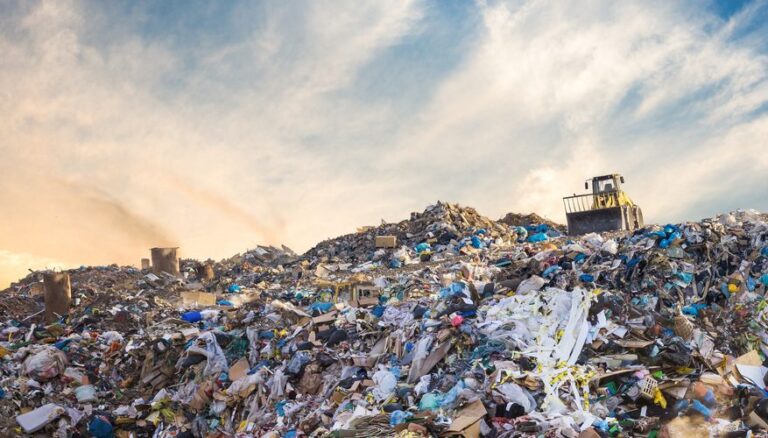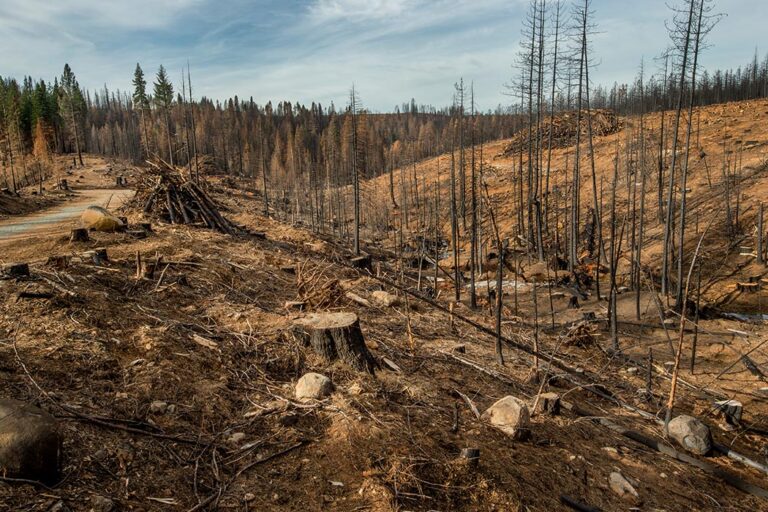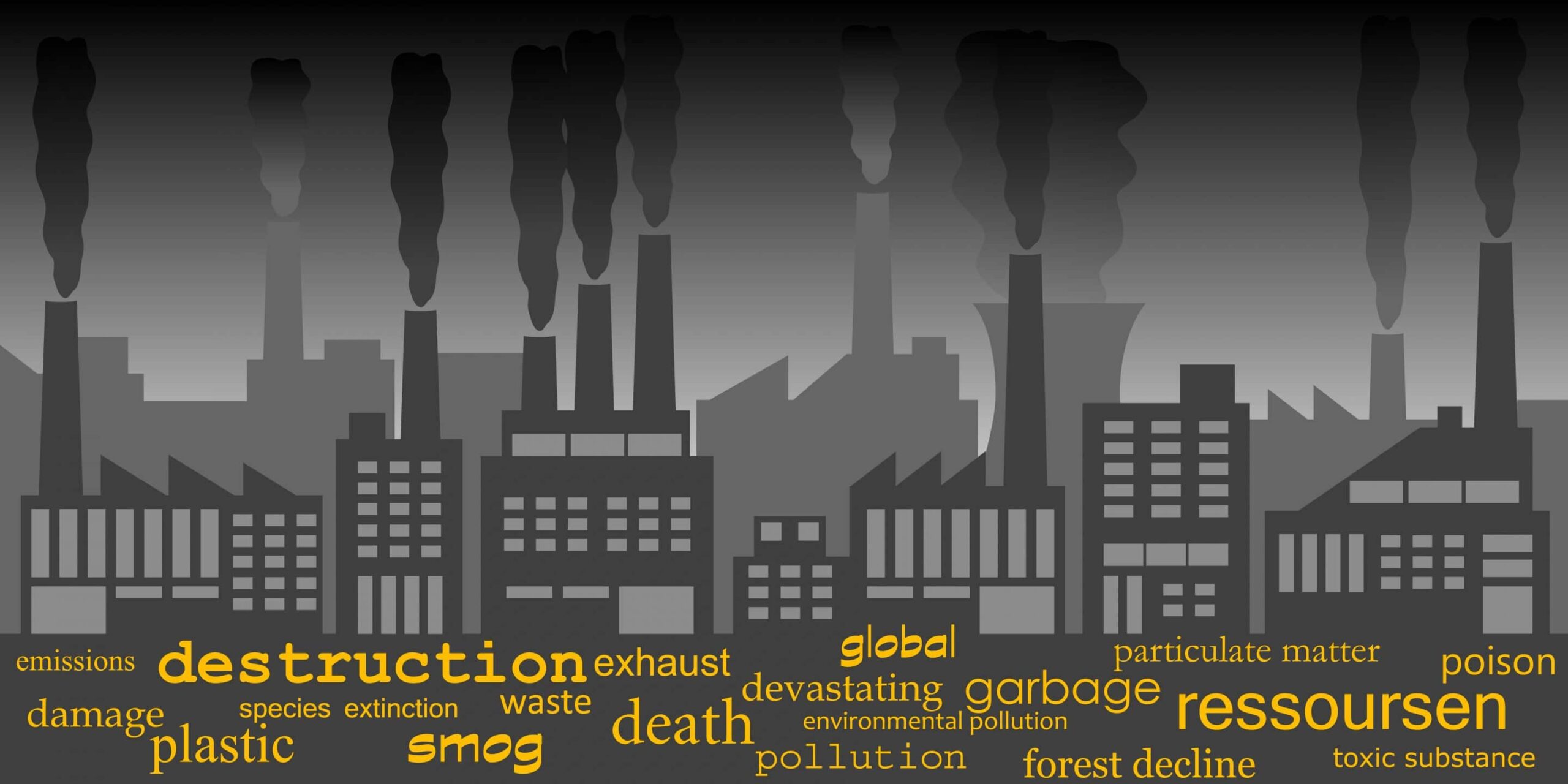[et_pb_section bb_built=”1″][et_pb_row][et_pb_column type=”4_4″][et_pb_text]
What Is Environmental Degradation?
The environment is just the natural world that surrounds us. Our environment provides us with everything we need: air, food, water, and all the natural resources needed to build our civilization and keep it running. Because human beings are entirely dependent on the environment for our continued survival, it’s important that we keep it clean and utilize it in a sustainable way.
Simply put, environmental degradation is a decline in the quality of our environment. This can be a result of pollutants that spoil the air, water or food supply, the over-extraction of resources so that little remains for future use, or the destruction of habitats so that the resources they once contained are no longer available. While natural disasters can cause environmental degradation, more often it is the result of human activities.
Causes of Environmental Degradation
There are many causes of environmental degradation, nearly all of them rooted in human technology. While some are the result of the unintended consequences of technological advancement, others are examples of humans becoming too successful and efficient at resource extraction. Here are some of the ultimate causes of environmental deterioration.
Global Climate Change
This phenomenon is a result of the unintended consequences of burning fossil fuels and releasing staggering amounts of carbon dioxide into the atmosphere. Mega-droughts have already left cities like Cape Town in South Africa without water and have led to massive die-offs in the Amazon rainforests of Brazil.
Industrialization
The industrial revolution increased human life expectancy and gave us the affordable luxuries of the modern world. It has also led to air, water and soil pollution that has direct affects on human and animal health. China’s explosive industrialization since the 1980s has led to some of the worst air pollution in the world. Industrialized agriculture in the American heartland sends so much fertilizer down the Mississippi River each summer that it causes an annual “dead zone” roughly the size of Connecticut in the Gulf of Mexico.
Overconsumption

As countries become wealthier, they consume more resources per capita. The United Sates, for example, has less than five percent of the world’s population, but is responsible for consuming about 25 percent of resources. One American consumes the same amount of resources as 35 people living in India.
Overfishing
Improvements in fishing techniques allowed humans to fully exploit or deplete over 90 percent of the fish in the ocean. While fishing companies made excellent profits for years, those same companies have collapsed as fish stocks have disappeared.
Deforestation

Another case of humans becoming too successful in their ability to harvest resources, deforestation has destroyed various habitats, erasing those resources from the world forever.
War
Armed conflict does irreparable damage to the environment in addition to its costs on human life. The Iraqi food supply, for example, is still contaminated with depleted uranium from a nuclear reactor bombed in 1991.
Effects of Environmental Degradation
Environmental degradation has a host of negative outcomes that effect human beings both directly and indirectly. Here are just a few.
Increased poverty
The depletion of natural resources leads to a loss of livelihood, leaving communities in poverty. When the New Foundland cod fishery collapsed in 1992, for example, 30,000 fisherman were left with no way to support their families. Similar stories can be found for logging and mining towns that depleted local resources.
Famine
Industrial agriculture can be a major cause of environmental degradation, but it’s also a victim of it. In 2009, droughts in grain-producing countries were a major contributor to a global food crisis that caused prices to spike and populations to riot (Source: Global Policy Forum).
Weather Extremes
The increasing frequency and intensity of tropical storms, and the increasing intensity and duration of droughts, has been attributed to climate change. These weather extremes increase soil erosion, affect food production and can have devastating effects on cities and towns. New Orleans neighborhoods were inundated with raw sewage and industrial waste during Hurricane Katrina.
Species loss
Species have already gone extinct due to the habitat destruction caused by the destruction of the Amazon rainforest, and many others are now endangered.
Disease
The World Health Organization estimates that thirteen million people die every year as a result of preventable environmental causes. Asthma rates are rising as a result of increasing air pollution and rises in malaria and cholera have been blamed on deteriorating ecosystems.
Preventing Environmental Degradation
While governments and industry are positioned to make the biggest difference in preventing environmental degradation, there are things everyone can do to reduce their impact. Try implementing some of these changes to minimize your damage to the environment.
Carpool, ride a bike, or take public transportation
Not everyone lives close enough to their job to commute on a bike or take the bus. Carpooling with a coworker is another way to save gas money and reduce air pollution and energy consumption.
Own fewer electronics
Do you need a smartphone, a tablet and a laptop? The extraction of the rare minerals used to create these devices has had devastating effects on local water supplies and human health.
Connect with a CSA farm
Community-supported agriculture is a way for you to eat great locally grown food and support family farms in your community who practice sustainable agriculture. Fewer chemical fertilizers and pesticides mean smaller dead zones.
Stop using disposable products
The average American sends 5 pounds of garbage to the dump every day. That’s 1,825 pounds of trash a year. You can cut that number down a lot by giving up disposable packaging and products whenever possible. Buying food in bulk, using reusable cloth grocery bags instead of plastic or paper and cloth napkins instead of paper towels are all simple ways to cut down on your waste.
Switch to LED light bulbs
Trying to use less energy by unplugging appliances and electronics is a good idea, but even just switching to LED bulbs can cut down your energy usage and your electricity bills.
Conclusion
Human activity is the ultimate driver of environmental degradation, but it doesn’t have to be. Cleaner, more sustainable technologies are being developed all the time. By minimizing your contribution to problematic activities and supporting sustainable ones whenever possible, you can do your part to preserve the environment for future generations.
[/et_pb_text][/et_pb_column][/et_pb_row][/et_pb_section]









